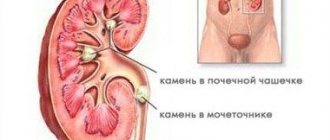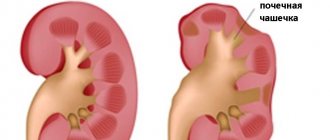Cystitis is a common inflammatory disease of the bladder among the adult population, especially in women. Acute cystitis can become chronic with periodic exacerbations. The reasons for frequent exacerbations of cystitis in women are a short, wide urethra (urethra) and proximity to natural sources of infection - the vagina and anus. Hormonal disorders in women often lead to vaginal dysbiosis and the growth of pathogenic bacteria, which provoke frequent exacerbations of bladder inflammation. In men, symptoms of cystitis are usually associated with prostate disease.
Main symptoms of cystitis
- frequent painful urination
- pain in the groin area
- false urge to urinate
- cloudy urine, possibly containing blood
- sudden onset of symptoms
- increase in body temperature
What are leukocytes, their norm in urine
Leukocytes are white blood cells that provide the body's immune system with a response to invading pathogenic agents. They are produced in the bone marrow and have a lifespan of about 7 days. Leukocytes travel with the blood and participate in the absorption of foreign elements. Having done their work, the cells die. They are removed from the body along with urine. The urine of a healthy person contains no more than 3-5 units in the field of view.
In men, the norm of leukocytes in the urine is 0-3, in women - 0-5, in girls 0-7, in boys 0-5 units in the field of view. The absence of cells is a variant of the norm.
If a large number of white blood cells (leukocyturia) are found in the urine, then an inflammatory or infectious process is occurring in the body. Any pathological conditions activate the production of leukocytes, and, as a result, an increase in their concentration.
The body signals a health problem by increasing temperature and fever, deterioration in overall health, and changes in the color and transparency of urine.
The pathological condition is detected using OAM (general analysis of morning urine). To confirm/refute the diagnosis, the doctor will additionally prescribe a Nechiporenko test and a general blood test with a leukocyte formula. A nephrologist, urologist, pediatrician or general practitioner, gynecologist or oncologist deciphers the test results.
Urinary disorders
Various urinary disorders are the most common manifestation of urological pathology. Urinary disorders are understood as a complex of symptoms, including changes in frequency of urination, incontinence or urinary retention, painful urination, and urgency.
Change in frequency of urination
The frequency of urination depends on age. In a newborn, the reflex to urinate is unconditional; the frequency of urination reaches 20 times a day. As the volume of the bladder increases and the urination reflex stabilizes, the child begins to urinate less frequently - up to 5-6 times a day. It should be noted that the effective volume of urination must correspond to the age norm (2-3 years - 50-90 ml, 4-5 years - 100-150 ml, 6-9 years - 150-200 ml, 10-12 years - 200 –250 ml, 13–15 years – 250–350 ml).
A change in the frequency of urination is possible either in the direction of increasing (pollakiuria) or decreasing. Changes in urinary frequency are rarely a concern for parents; This symptom is usually noticed when it is combined with urgency, pain, or urinary incontinence. Nevertheless, it is important to be able to identify changes in urination frequency, which allows you to correctly determine the patient’s examination plan in the future. The most objective method is to record the rhythm of spontaneous urination during the day, indicating the time of urination and effective volume. Carrying out a study over 3-4 days allows the doctor to assess the frequency of urination and identify possible abnormalities.
When to determine the number of leukocytes in urine
General indications for taking a urine test are:
- examination for infectious diseases and inflammatory processes;
- the need to establish an accurate diagnosis if diseases of the urinary system are suspected;
- examination of pregnant women before registration at the antenatal clinic, routine examinations;
- the occurrence of complications during pregnancy, suspicion of gestosis;
- the need to evaluate the effectiveness of prescribed treatment, including antibiotic therapy;
- undergoing routine medical examinations;
- diagnosing diseases in children;
- monitoring the condition of patients with cancer.
White blood cells in urine should be checked if the following symptoms occur:
- acute pain in the lower abdomen, under the right rib or in the lower back;
- frequent urination;
- a feeling of incomplete emptying of the bladder;
- discomfort, pain, burning and itching when urinating;
- darkening of urine, appearance of an unpleasant odor;
- the appearance of foreign inclusions in urine (blood clots, mucus, flakes);
- increased temperature and fever of unknown origin;
- increased blood pressure.
Sluggish or chronic disease of the urinary organs can be suspected when yellowish spots are found on underwear.
What amount is considered elevated?
It can be stated that leukocytes in the urine are elevated if up to 20 copies are detected. If the number reaches 85-100, then we can talk about an acute disease of the genitourinary system and the presence of pus in the urine. The pathology is called pyuria. In this case, the liquid becomes dark in color, becomes cloudy and has a purulent odor. Upon examination, impurities are detected.
In order not to distort the test result, on the eve of urine collection it is important to exclude the influence of the following factors:
- abuse of fatty, protein foods;
- diaper rash in babies;
- poor genital hygiene;
- severe dehydration;
- pathological vaginal dryness during menopause.
High white blood cells can be caused by the presence of a bladder catheter, as well as the use of certain pharmaceuticals: diuretics, NSAIDs, antibiotics and drugs that suppress the immune system.
Preparing for a urine test in women
Preparation for OAM in women includes a number of hygienic procedures, as well as general restrictions.
- On the day before taking biomaterial, it is advisable to refrain from physical activity, drinking alcohol, and not eat vegetables and fruits (beets, carrots, citrus fruits, watermelons), red wine, and multivitamins, which can change the color of urine.
- Avoid taking diuretics for 48 hours before urine collection (in consultation with your doctor).
- It is not advisable to collect biomaterial earlier than 5-7 days after cystoscopy.
- Women should not collect urine during menstruation, and it is also not recommended to take a urine test 2 days before and 2 days after menstruation. If a general analysis is urgently required during menstruation, the woman is advised to place a tampon in the vagina before the test.
- Carry out a thorough toileting of the external genitalia under the shower with soap (it is prohibited to use hygiene products with antiseptics).
Types of leukocyturia
Depending on the number of white blood cells, three types of leukocyturia are distinguished:
- insignificant (from 7 to 40 units);
- moderate (up to 100 specimens in the field of view);
- pronounced (over 100 units).
A high concentration of white blood cells in the urine may be:
- caused by diseases of the urinary system (true) or arising against the background of an inflammatory process in the genital organs (false);
- infectious or non-infectious origin. In the first case, the presence of infection is confirmed by urine culture or PCR diagnostics. Non-infectious leukocyturia is not associated with bacterial activity; it is caused by an inflammatory process due to allergic cystitis, autoimmune glomerulonephritis, and medications.
Depending on the predominant type of leukocytes, they are distinguished:
- lymphocytic leukocyturia, giving reason to suspect lupus erythematosus or rheumatoid arthritis;
- mononuclear, arising from renal pathologies;
- neutrophilic, which is provoked by tuberculosis, tonsillitis, malaria or pyelonephritis;
- eosinophilic, accompanies allergies.
What diseases cause an increase in leukocytes in the urine?
A large number of diseases can cause an increase in the concentration of leukocytes in the urine. If the analysis shows deviations from the norm, then it is necessary to undergo further examination to exclude serious diseases, and if they are confirmed, begin timely treatment.
The main diseases in which leukocyturia is detected:
- pathologies of the urinary tract: cystitis, urethritis, pyelonephritis, glomerulonephritis, stones in the bladder or kidneys, cystic formations, abscess of kidney tissue, damage to the renal vessels in diabetes mellitus;
- pathologies of the female genital organs: vaginitis, thrush, inflammatory processes in the uterine appendages, bartholinitis, endometritis;
- pathologies of the male genital organs: adenoma, inflammatory process in the prostate gland, balanoposthitis, infectious diseases;
- other diseases: autoimmune origin, cancer, gallstones, pneumonia, diabetes, various allergies, heart and vascular diseases, appendicitis.
Re-evaluating the “three A’s” of treatment
Traditional treatments for chronic pelvic pain syndrome, collectively known as the "triple A's," are antibiotics, anti-inflammatory drugs, and alpha blockers.
Antibiotics
The use of antibiotics, medications that kill bacterial infections, remains controversial. For starters, only a very small percentage of men with chronic pelvic pain syndrome test positive for a bacterial infection. This suggests that antibiotics will not be effective for most men. Randomized clinical trials support this.
Some researchers argue, however, that a negative bacteria test does not mean bacteria are not present. The best explanation for why this may be the case is that the bacteria may be present in the glands or stroma (connective tissue) of the prostate gland without being released into the urine. Another is that bacteria cannot be detected by modern methods. To further complicate matters, although a positive test indicates the presence of bacteria, it does not necessarily mean that bacteria is the cause of that person's prostatitis. Where do these uncertainties leave men affected by this disease?
At the time of diagnosis, even when testing does not detect bacteria, most researchers still recommend that men newly diagnosed with chronic pelvic pain syndrome take an antibiotic for a limited time, lasting no more than four weeks. This strategy may help some men, even if their symptoms are caused by inflammation rather than a bacterial infection. Some antibiotics have anti-inflammatory properties, but they work differently than nonsteroidal anti-inflammatory drugs (NSAIDs).
But repeated courses of antibiotics probably don't help. Although antibiotics have few side effects, they are not without them. They can cause problems such as nausea and diarrhea and interfere with treatment for other conditions. The use of fluoroquinolone antibiotics “of the type prescribed for the treatment of chronic pelvic pain syndrome” increases the likelihood of Achilles tendon rupture for reasons that are not fully understood.
Anti-inflammatory drugs
Anti-inflammatory medications, particularly aspirin or NSAIDs such as ibuprofen, help some men manage the pain of chronic pelvic pain syndrome. However, these medications usually do not help on their own. NSAIDs may help reduce pain, but they may then need to be used at the lowest possible dose for a short period of time. The best evidence suggests that it is better to combine NSAIDs with other medications, such as an alpha blocker, which may actually address the underlying problem in chronic pelvic pain syndrome.
Alpha blockers
Alpha blockers are used primarily to treat BPH. However, they can also be prescribed for chronic pelvic pain syndrome because they relax the muscles of the urinary tract, allowing urine to flow more freely and thus relieving urinary dysfunction. Research shows that these medications are not only effective for treating chronic pelvic pain syndrome, but should be used more frequently and more specifically for greater effect. For example, a review published in Urologia Internationalis of 10 studies of alpha-blocker therapy. The authors concluded that men who were recently diagnosed with chronic pelvic pain syndrome were more likely to respond to alpha blockers than men who had dealt with the condition for many years. They also concluded that an extended course of treatment (three to six months) was more effective than a shorter course.
Why do leukocytes increase in pregnant women?
OAM is a mandatory test prescribed for pregnant women. In the third trimester, indicators must be monitored weekly.
Due to the fact that the antigenic load on the body increases, a slight excess of the leukocyte norm is allowed in the tests.
A sharp increase in concentration gives the doctor reason to suspect:
- diabetes mellitus in pregnancy;
- diseases of the urinary system (cystitis or pyelonephritis);
- complication in the form of severe kidney damage;
- thrush;
- disturbance of bladder tone.








